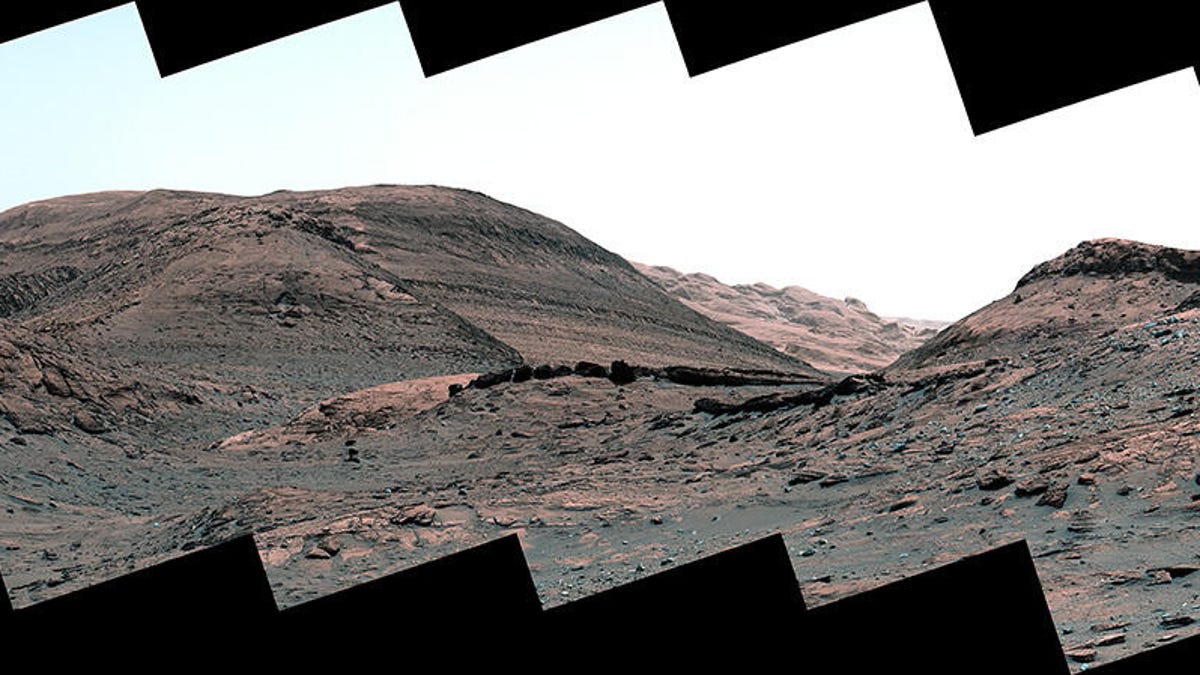NASA Mars Rover Snaps Flaky, Funky 'Scientifically Fascinating' Landscape
Some of those rocks look like wafer cookies.
We know what NASA's Perseverance rover has been up to lately: checking out a piece of foil in a river delta area on Mars. But what about its older sibling, the Curiosity rover?
Curiosity has been exploring a different perspective on the red planet's history of water in a transitional area of the Gale Crater, and the views are spectacular.
On Wednesday, NASA released a series of images showing the rover's perspective on its recent travels. It's been making its way up the base of Mount Sharp, a massive central mountain in the crater. Curiosity is looking to better understand how water worked on Mars and whether the planet might have been habitable for microbial life at some point in the past.
Curiosity snapped this 360-degree panorama using 133 images captured on May 22, 2022, as it moved between clay-rich and sulfate-rich areas of Mars.
The transition zone is between two areas called the clay-bearing unit and the sulfate-bearing unit, a nod to the different kinds of minerals found in each region. NASA described this zone as "scientifically fascinating" and said it "may provide the record of a major shift in Mars' climate billions of years ago that scientists are just beginning to understand."
The clay minerals can be traced to long-ago lakes and streams. Now that Curiosity is higher up the base of Mount Sharp, the landscape is changing.
"We no longer see the lake deposits that we saw for years lower on Mount Sharp," said Curiosity project scientist Ashwin Vasavada. "Instead, we see lots of evidence of drier climates, like dry dunes that occasionally had streams running around them. That's a big change from the lakes that persisted for perhaps millions of years before."
On June 2, NASA's Curiosity rover captured this close-up look at "layered, flaky" rocks that hint at the Gale Crater's watery past.
It's a geologic feast in the zone. The space agency said hills in the area likely formed from sand dunes hardening into rock. The rover spotted "layered, flaky" rocks that look like stacks of broken wafer cookies. These fascinating formations may have come about due to water action in an ancient streambed or pond.
Researchers will be kept busy by the rover's latest observations.
"Making the story richer yet more complicated is the knowledge that there were multiple periods in which groundwater ebbed and flowed over time, leaving a jumble of puzzle pieces for Curiosity's scientists to assemble into an accurate timeline," said NASA.
The Curiosity rover is coming up on the 10-year anniversary of its Mars arrival. That longevity has come with some challenges. NASA reported Curiosity went into a protective safe mode on June 7 due to a temperature reading from inside the rover, but it went back to work two days later. NASA Jet Propulsion Laboratory engineers are still investigating the problem. Also, the aluminum wheels are pretty beat up but still working to get the rover across the rocky ground.
The latest views from the Gale Crater provide a lovely big-picture counterpoint to the rover's recent view of a tiny, sculptural "spikes" formation. Big or small, Mars has it all.


